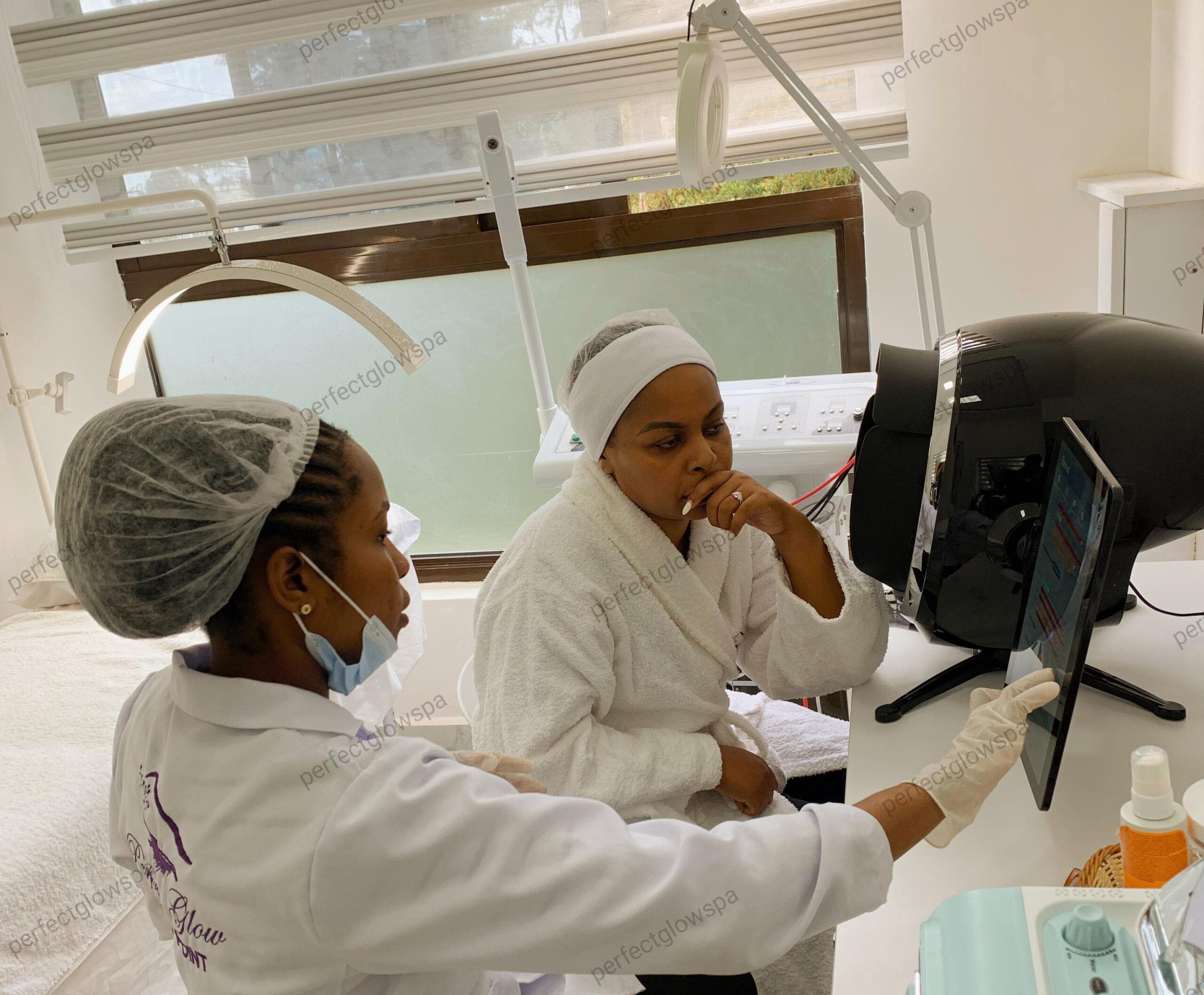Decoding Your Skin
Skin analysis is the cornerstone of effective skincare. It’s the process of examining your skin to determine its type, condition, and specific needs. Understanding your skin’s unique characteristics allows you to select the right products and treatments, ultimately leading to a healthier, more radiant complexion. Whether you’re a skincare enthusiast or a novice, a thorough skin analysis is the first step towards achieving your skin goals.
What is Skin Analysis?
Skin analysis is a comprehensive assessment of your skin’s health and appearance. It involves a visual examination, tactile assessment, and sometimes the use of specialized tools to identify various skin characteristics. This process helps to determine your skin type (oily, dry, combination, or sensitive), identify any underlying skin conditions (acne, rosacea, hyperpigmentation), and assess your skin’s overall health (hydration levels, elasticity, texture).
A professional skin analysis typically includes:
- Visual Examination: Observing skin tone, texture, pore size, and any visible signs of aging or damage.
- Tactile Assessment: Touching the skin to evaluate its texture, moisture levels, and elasticity.
- Questioning: Gathering information about your skincare routine, lifestyle, and any skin concerns.
- Specialized Tools (Optional): Using magnifying lamps, skin analyzers, or other devices to get a closer look at the skin’s layers.
Why is Skin Analysis Important?
Understanding your skin’s unique needs is crucial for several reasons:
1. Personalized Skincare Routine
Skin analysis helps you identify the right products and ingredients for your skin type and concerns. Using products that aren’t suited for your skin can lead to irritation, breakouts, or other adverse reactions. A personalized skincare routine ensures that you’re using products that will effectively address your specific needs.
2. Targeted Treatment of Skin Concerns
Skin analysis can identify underlying skin conditions that require targeted treatment. For example, if you have rosacea, a skincare professional can recommend products and treatments that will soothe and calm your skin. If you have hyperpigmentation, they can suggest products that will help to lighten dark spots and even out your skin tone.
3. Prevention of Skin Damage
Understanding your skin’s vulnerabilities allows you to take preventative measures to protect it from damage. For example, if you have sensitive skin, you can avoid harsh ingredients and opt for gentle, fragrance-free products. If you have sun-damaged skin, you can prioritize sunscreen use and incorporate antioxidants into your routine.
4. Improved Skin Health
By addressing your skin’s specific needs, you can improve its overall health and appearance. A healthy skin barrier is essential for retaining moisture, protecting against environmental aggressors, and preventing premature aging.
5. Cost-Effective Skincare
Investing in a professional skin analysis can save you money in the long run. By using the right products and treatments, you can avoid wasting money on products that don’t work for your skin.
How to Perform a Basic Skin Analysis at Home
While a professional skin analysis is recommended for a thorough assessment, you can perform a basic skin analysis at home to gain a better understanding of your skin.
1. Cleansing
Begin by cleansing your face with a gentle cleanser to remove any makeup, dirt, or oil. Pat your skin dry with a clean towel.
2. Observation
Observe your skin in natural light. Pay attention to:
- Pore size: Are your pores large, small, or barely visible?
- Texture: Is your skin smooth, rough, or flaky?
- Oiliness: Does your skin feel oily, dry, or balanced?
- Redness or irritation: Are there any areas of redness, inflammation, or irritation?
- Signs of aging: Are there any fine lines, wrinkles, or age spots?
3. Tactile Assessment
Gently touch your skin to evaluate its texture and moisture levels.
- Dryness: Does your skin feel tight or flaky?
- Oiliness: Does your skin feel greasy or slick?
- Sensitivity: Does your skin feel irritated or reactive to touch?
4. Blot Test
To determine your skin type, perform a blot test.
- Press a clean tissue against different areas of your face (forehead, cheeks, nose, chin).
- Observe the tissue for oil.
- If the tissue shows oil from all areas, you likely have oily skin.
- If the tissue shows oil from the T-zone (forehead, nose, chin) but not the cheeks, you likely have combination skin.
- If the tissue shows no oil, you likely have dry skin.
5. Skin Type Identification
Based on your observations and the blot test, identify your skin type:
- Oily skin: Characterized by large pores, excess oil production, and a tendency towards breakouts.
- Dry skin: Characterized by small pores, tight or flaky skin, and a lack of moisture.
- Combination skin: Characterized by oily T-zone and dry cheeks.
- Sensitive skin: Characterized by redness, irritation, and reactivity to products.
When to Seek a Professional Skin Analysis
While a home skin analysis can provide valuable insights, it’s essential to seek a professional skin analysis in the following situations:
- Persistent skin concerns: If you’re struggling with acne, rosacea, hyperpigmentation, or other skin conditions.
- Uncertainty about skin type: If you’re unsure about your skin type or have difficulty identifying your skin concerns.
- Before starting a new skincare routine: To ensure that you’re using products that are suitable for your skin.
- Before undergoing cosmetic procedures: To assess your skin’s suitability for treatments like chemical peels or laser therapy.
- To receive personalized recommendations: For expert advice on products, treatments, and lifestyle changes that can improve your skin health.
The Benefits of Professional Skin Analysis
A professional skin analysis offers several advantages over a home assessment:
- Expert knowledge: Skincare professionals have extensive knowledge of skin anatomy, physiology, and various skin conditions.
- Specialized tools: Professionals have access to advanced tools and equipment that can provide a more in-depth analysis of your skin.
- Personalized recommendations: Professionals can provide tailored recommendations for products, treatments, and lifestyle changes based on your skin’s specific needs.
- Early detection of skin problems: Professionals can identify early signs of skin conditions that may not be visible to the naked eye.
- Improved treatment outcomes: By addressing your skin’s specific needs, professionals can help you achieve better treatment outcomes.
Conclusion
Skin analysis is a fundamental step in achieving healthy, radiant skin. By understanding your skin’s unique characteristics, you can create a personalized skincare routine, target specific skin concerns, and prevent future damage. Whether you choose to perform a basic analysis at home or seek a professional assessment, prioritizing skin analysis will ultimately lead to a more confident and beautiful you.




